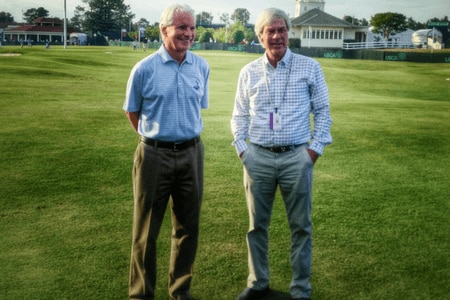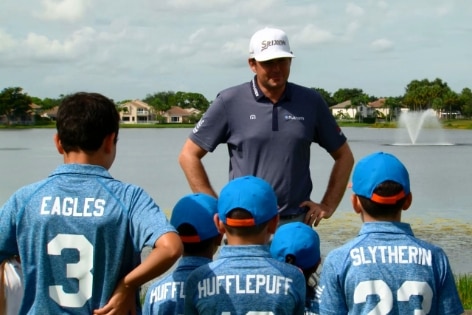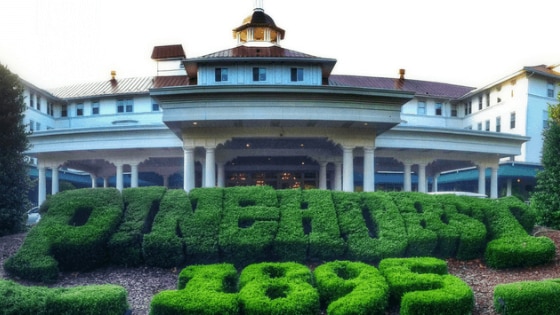Even through the thickest set of his iconic round-rimmed glasses, the great Donald Ross would’ve had a hard time recognizing his favorite of an impressive and prolific portfolio. And thus, in 2010, Pinehurst made a bold move by hiring Bill Coore and Ben Crenshaw to turn back the clock on No. 2.

Rocking The Cradle: Pinehurst Renovations and the Golf Revolution

At that time, with a hobbled economy and back-to-back Men’s and Women’s U.S. Opens on the horizon (2014), it seemed to be an unnecessary risk by what’s considered “The Cradle of American Golf.” And yet, as Don Padgett, who was the President of Pinehurst at that time, once said to me: “It’s a national treasure. We had to restore it.”
Needless to say, the golf world was watching through a collective set of thick glasses. And so were the locals.
It was Bill Coore who remembered, shortly after getting the job, being stopped in the Pinehurst parking lot by a stranger, who skipped the southern hospitality spiel. “I don’t know what the hell you’re doing, but I’ll tell you one thing,” said the stranger, “you better not mess this up. Because as this golf course goes, so too does this entire town.”
Well, Coore and Crenshaw delivered a successful restoration. And as the golf world watched both U.S. Opens, so too did that entire town. Rounds are up, water costs are down, and the rest could be considered history. However, I consider “the rest” of what Pinehurst is doing to be the best indicator of what’s the ongoing revolution in golf.
“Looking back at 2010, it was about being true to our core,” says Tom Pashley, who served as Padgett’s executive vice president and is the current president of Pinehurst.
Looking back, what Pinehurst did and continues to do, has an impact and ramifications on the world of golf around us.
Since 2010, Pinehurst has:
- Added a putting course in 2011.
- Acquired National Golf Club in 2014, which is now No. 9.
- Renovated and greatly enhanced the porch bar in 2015.
- Made plans for Gil Hanse to renovate No. 4 in 2017, but not before Kyle Franz renovates and reroutes Nos. 3 and 5, making room for what will be Hanse’s 10-acre 9-hole short course, which breaks ground in May.
- Relocate the putting course, surrounding the main clubhouse and epicenter of The Cradle with short, generational, beginner and buddies golf.
“What Pinehurst has done and is doing can be tied back to the first Golden Age of golf architecture,” says Hanse. “Cutting edge, sand-based land, that’s not that accessible, but very good for golf.”

Meanwhile, hundreds of courses are being renovated or restored. Municipals are magical again. Short is fun. Rules are relaxed. Young is dominant. Kids are the focus, and therefore, will be the future. Alternative forms, formats and fashion are forward and fantastic. If there’s not a TopGolf already in a city near you, there’s either one being built or there’s a stadium being converted into a makeshift TopGolf experience.
Most experts will agree, this revolution started in 1995 at Sand Hills in Nowhere, Nebraska, where Dick Youngscap inspired Mike Keiser to find and build remote sand-based golf in America.
Since 1999, Keiser and his various partners and minimalist architects have built 10 big courses, four short courses and one putting course in four remote destinations. From the Southwest coast of Oregon (Bandon), Keiser went to Tasmania (Barnbougle), then Nova Scotia (Cabot) and now Wisconsin (Sand Valley).
And yet, regardless of the partners or architects, his focus and goals have never changed: The focus is great golf. The goals at each remote destination are to not only to get people to make the trip, but more importantly, get them to come back.
“That drives everything,” says Josh Lesnik, the first general manager at Bandon Dunes and current president of Kemper Sports, which manages Bandon Dunes and more than 100 golf properties in America. “That same focus and those goals still drive us every day.”
So, if Youngscap started the trend, and Keiser ran with the trend, it’s a storied resort like Pinehurst—the original remote sand-based hub of golf in America—making moves like the ones detailed above, that transitions a trend into a revolution.
“Golf complexes are trying to appeal to a wide variety of clients, which includes shorter and faster to play courses,” says Coore, who, along with Crenshaw, not only restored No. 2, but built Sand Hills and at least one course at all four Keiser destinations. They’ve also built a course at Streamsong in Florida, and are now building a course at Big Cedar Lodge in Hollister, Missouri, where owner Johnny Morris built two short courses before he commissioned Coore and Crenshaw to build a second 18-hole“championship” course.
In other words, if indeed this is a revolution, Coore and Crenshaw are one of the battleground generals leading the charge.

“Pinehurst doesn’t change easily,” says Coore. “So when they do what they’re doing, it means they don’t see this as a passing fashion. And I agree with that.
“How does the saying go?” Coore asks. “The sum of the parts is greater than the whole?”
Exactly. It was Aristotle, and he said: “The whole is more than the sum of its parts.”
From U.S. Open golf for both men and women, all the way down to a popular porch, a putting course and now a par-3 course, the sum of Pinehurt’s parts is a whole lot of good for golf and anyone remotely interested in picking up a club.
“We are always looking for new ways to satisfy our customer,” says Pashley. “We have nine courses and over 60,000 yards of golf at Pinehurst, and yet, the idea that the addition of a nine-hole, 789-yard short course could have such an impact at a 100-year-old destination is crazy. But I guess that’s why it’s part of the revolution.”






